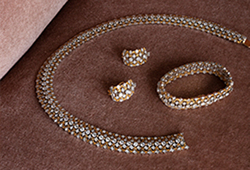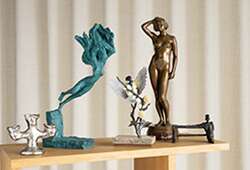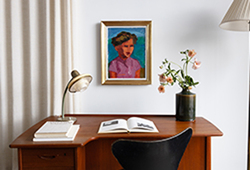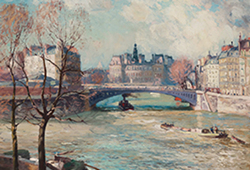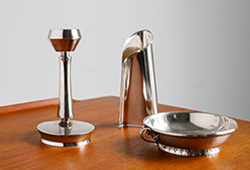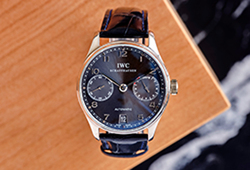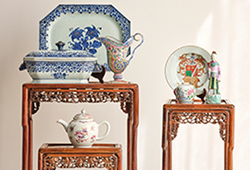Lock, biskviporslin. Qingdynastin 17/1800-tal.
Med märke på locket. Arkaiserande modell, Gui. Ovalt lock med monokrom ljusblå/grönglasyr. Meanderfris längs lockets kant. Reliefdekor med motiv av kalligrafi och qilindrake hållandes lingzhi-svampar. Längd 21 cm.
Nagg vid lockknopp.
Proveniens
From the Collection of Gustaf Wallenberg (1863-1939). Gustaf Wallenberg was Swedish business man, diplomat and active politician. He was the son of André Oscar Wallenberg, founder of Stockholm Enskilda Bank (today SEB, and grandfather of Raoul Wallenberg (1912-47?). After a career in the Swedish Navy he turned to the business world and was very active in striving to better the transoceanic shipping industry. Something that came in handy when he in 1908 successfully negotiated with the Qing court in Beijing about a friendship, trade and navigation treaty. The collection was acquired between 1906 and 1918 when Wallenberg was the Swedish Envoyé in Tokyo. From 1907 he was also accredited for Beijing and came to spend time in both countries as the Swedish Ambassador. Mr Wallenberg came to be in China in dramatic part of its history, when a lot of items came on the market and when the golden era of collecting Chinese works of art started in Europe. Thence by descent.
Utställningar
Compare another vessel also after a metal shape at the Metropolitan Museum, from the Fletcher Fund, 1925. Accession Number: 25.143.1
These vessels (25.143.1–.3) were used in state rituals held in the first lunar month of the year, during which the emperor made offerings to heaven at the Altar for Bountiful Harvest (Qigutan), part of the Temple of Heaven in Beijing.
In shape and decoration, these ceramic vessels—a gui and two dou—are modeled on bronze grain receptacles of the Eastern Zhou dynasty (770–256 B.C.), which would have formed part of a larger set of objects, employed in ritual offerings, that included containers for wine and meat. In later times, ceramic took the place of bronze, and vessels were color-coded according to one of four ritual altars at which the emperor conducted ceremonies: blue for heaven, yellow for earth, red for the sun, and white for the moon.
Litteratur
Bukowskis sold a part of this collection previously at Bukowskis Sale 554 in 2009 and Bukowskis Sale 556, 2010.
Övrig information
The black and white images are from Temple Court, the Wallenberg residence in Japan.





